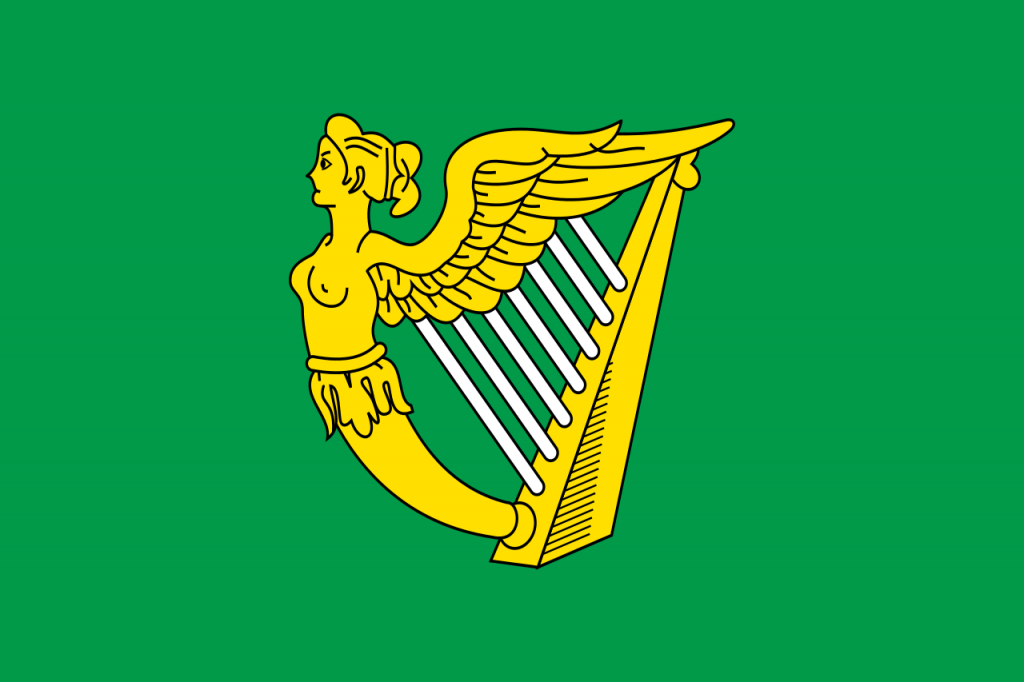Why Emeralds and Green Are So Closely Linked to Ireland
Why Is Green Associated With Ireland?

We are sure you have heard of Ireland being referred to as “The Emerald Isle,” so it may come as a surprise that emeralds are not naturally found in Ireland at all. The origin of the moniker and the embracing of emeralds by the Irish relate to a wonderful history and are a great place to start our celebration of St. Patrick’s Day, the holiday forever associated with green!
“Emerald Isle” First Appeared in a Poem

Irish literature has a strong history in producing poets, from Johnathan Swift to Thomas Moore, Samuel Beckett to W. B. Yeats. So it only makes sense that the term “Emerald Isle” and the description of Ireland as an emerald originated in a poem. Written in 1795, Dr. William Drennan, a political activist and Belfast native, coined the term in his poem entitled “Erin” –
Arm of Erin, be strong! but be gentle as brave;
And uplifted to strike, be still ready to save;
Let no feeling of vengeance presume to defile
The cause of, or the men of, the Emerald Isle.
The Color Green Has a Strong Irish History
The color green has a strong Irish history, and it is often said that the country of Ireland has over 40 shades of green present in its lush rolling hills, cliffs, and landscape countrysides. In many ways this is extremely similar to the glorious shades of emerald that can be a pure, vibrant green or a softer yellowish green, all the way to a deep bluish green.

Green also has a very prominent presence in Irish politics. The earliest recognized use of green for political reasons was during the violent Great Irish Rebellion of 1641, in which Catholic landowners and bishops rebelled against the English crown claiming authority in the north of Ireland. Owen Roe O’Neill was a military commander who helped lead the rebellion, and he used a green flag with a harp to symbolize the resistance.
The color green cropped up again in the 1790s as the revolutionary republicanism that was taking hold in America and France made its way to Ireland. The Society of United Irishmen was a prominent group in this movement and wore green as a uniform. Many ballads and poems of the time refer to “the wearing of green.”
The Irish Have Fully Embraced the Spirit of Emeralds
The vibrancy, lushness, and durability of emeralds has found a way to be represented in much of Ireland’s culture and national symbols. In fact, many pubs, bands, and cultural groups feature “Emerald” in their title as an homage to the stone, the color, and the Emerald Isle.

Many national symbols have been embraced as soaring examples of a heartfelt and deep embrace of green. The green shamrock has long been adopted as symbol of the island nation, possibly the truest shade of green that we all recognize. And while emerald is not the national stone of Ireland (since none are naturally found there), Connemara marble, a green-hued stone found along all of Ireland’s west coast, is another green bearer of that title.
Even leprechauns have evolved to match the admiration of green in everything Irish. Up until the 20th century, leprechauns featured in literature, figurines, and art were usually dressed in red. Today, you’d be hard pressed to find a leprechaun that is not entirely outfitted in a green suit, green shoes, and green top hat.
Tradition of Wearing Green on St. Patrick’s Day

While the tradition of wearing green on St. Patrick’s Day may not have started in Ireland, it has definitely translated there over the last 150 years that it has been a part of celebrating the holiday. As Irish immigrants made their way to America after the Great Famine of the 1840s-1850s, many began wearing green and carrying Irish flags along with American flags as a symbol of pride in their home country.
The wearing of green became especially prominent during the annual celebration of the patron saint of Ireland, St. Patrick. As Irish immigrants built upon these traditions, the practice took root in their home country as well, further emphasizing the connection of Ireland to all things green.
Celebrate some St. Patrick’s Day green today!
